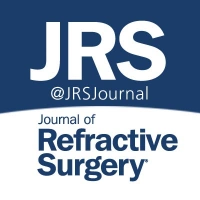ABSTRACT
PURPOSE
To compare the clinical and aberrometric outcomes obtained with a new diffractive pentafocal intraocular lens (IOL) and a diffractive trifocal IOL.
METHODS
Patients bilaterally implanted with the pentafocal Intensity SeeLens IOL (Hanita Lenses) (n = 30) and the trifocal FineVision POD F IOL (PhysIOL) (n = 30) during cataract surgery were studied after 1 month for refraction, visual acuity, defocus curve, contrast sensitivity, Hartmann-Shack aberration, and double-pass aberration. The Quality of Vision (QoV) questionnaire was used to evaluate visual comfort.
RESULTS
Distance and near visual acuities were similar with the two IOLs, but distance-corrected intermediate visual acuity was better with the Intensity IOLs (0.03 ± 0.04 vs 0.11 ± 0.04 logMAR in the FineVision eyes, P < .01). The difference between objective and subjective refraction was more myopic for the Intensity IOL (-1.15 vs -0.29 diopters [D]). The defocus curve was flatter with the Intensity IOL. Contrast sensitivity was similar in both IOLs. Hartmann-Shack aberration and double-pass aberration were similar, but the modulation transfer function cut-off value was worse with the Intensity IOL: 11.6 ± 2.7 vs 15.3 ± 4.9 (P < .01). QoV scores were better with the Intensity IOL, in particular for glare, halos, and starburst.
CONCLUSIONS
In this comparative series, the pentafocal Intensity IOL provided better intermediate vision and better defocus curve than the FineVision IOL, with comparable distance and near vision. The optical disturbances as reported by the patients were higher with the FineVision IOL. Additional studies will better define the aberration profile obtained with the pentafocal IOL.
